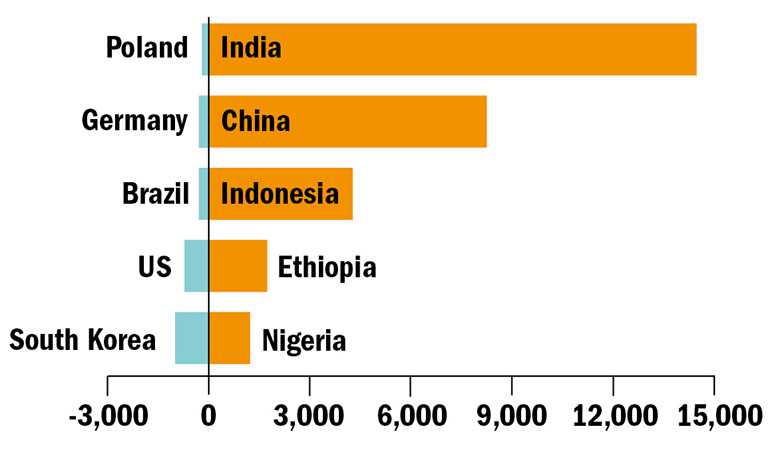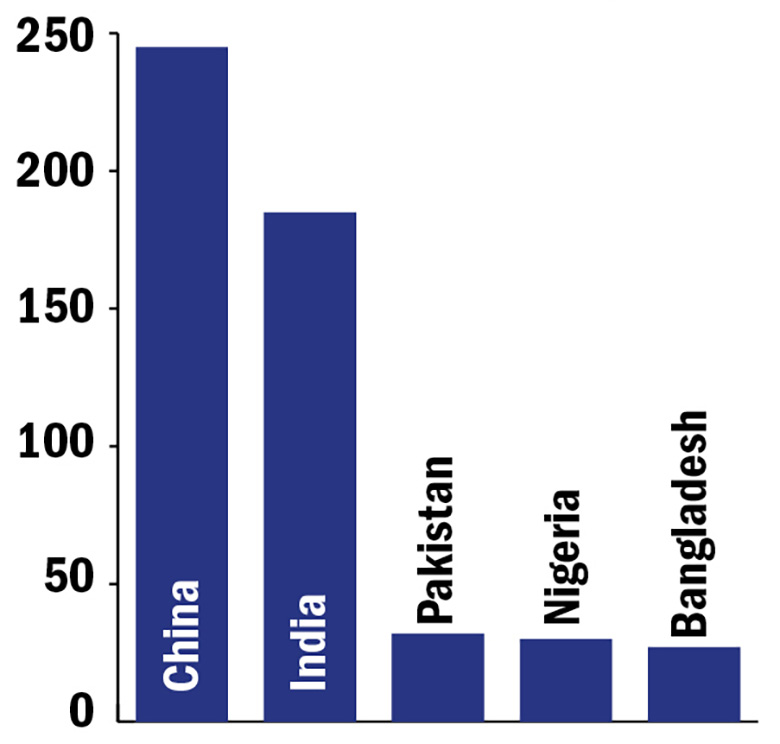The growth in the number of students leaving their home country to study abroad is forecast to slow down substantially in the next decade, a new study from the British Council has predicted.
New research shows that the number of outbound students across the world is expected to increase by 1.7 per cent annually on average between 2015 and 2027, a significant slowdown of the 5.7 per cent annual growth between 2000 and 2015.
This decrease in the rate of growth is largely because of increased local investment in higher education in many countries, which is resulting in increasing numbers of prospective students choosing to study within their own country, according to the study. Historically, students have gone overseas because of insufficient capacity or quality education at home.
The number of 18- to 22-year-olds globally is also expected to decline until 2020, driven by a large drop from China, before growing again to 2027, while the number of countries competing to host international students will rise.
Overall, the number of students enrolling in tertiary education is projected to increase by 1.5 per cent annually on average until 2027.
The forecast means that traditional major international student destinations, such as the US, UK and Australia, may no longer be able to rely on high youth populations in top sending countries and perceptions of their own high-quality education to drive continued significant growth in international student recruitment.
The study singles out the UK as a country whose growth in non-domestic enrolments has remained “significantly slower than the global average”.
The report, International student mobility to 2027: Local investment, global outcomes, forecast tertiary enrolment and outbound student mobility across 56 countries. These predictions were based on projections for tertiary-aged populations and household wealth, developed in partnership with Oxford Economics and largely based on data from the United Nations, across the nations, which are home to 80 per cent of the world’s tertiary-aged population.
The outbound student mobility rate is predicted to rise in 30 of the selected countries and to decline slightly in the remaining 26 nations.
The biggest declines in outbound students by absolute numbers will be in South Korea and Malaysia, where 35,000 and 10,000 fewer students respectively will study abroad, according to the study. This means that 73,000 South Korean students and 55,000 Malaysian students will go abroad in 2027.
Hong Kong will see the fourth-largest drop in outbound students, by 5,000 to 29,000.
Ups and downs: countries with largest rises and falls in tertiary enrolment
Increasing and decreasing tertiary enrolment (000s), 2015-27: top five

Source: Unesco, Oxford Economics, British Council
Zainab Malik, research director for Education Intelligence, the British Council’s global higher education research service, and author of the report, said: “When you look at examples like Malaysia, like Hong Kong, you see an increasingly high-quality higher education system that is not only attracting students to stay in their own country but also attracting students regionally.”
While China will be home to the greatest growth in outbound student numbers – the number of its students going abroad is forecast to increase by 245,000 to 1.46 million by 2027 – the country’s focus on increasing the participation in and quality of its universities is leading to a “decline in the propensity of Chinese students to study abroad”, she said.
In contrast, in India, the key drivers of growth have been favourable demographics and a rising outbound mobility ratio. The number of outbound Indian students is predicted to increase by 185,000 to 439,000 by 2027.
Together, the two Asian giants will continue to drive outbound mobility over the next decade; they are forecast to account for 60 per cent of the global growth in outbound students to 2027.
Exports: student sources
Growth in outbound students (000s), 2015-27: top five

Ms Malik said that the findings show that “we are on the precipice of massive change when it comes to the higher education landscape”.
She added that the change in global outbound student mobility patterns means that universities will have to diversify modes of education delivery as well as source countries of international students because international recruitment “may not continue to be the cornerstone of institutional internationalisation efforts”.
While previous research has argued that universities must look beyond India and China when it comes to international student recruitment, these new data suggest that institutions will also need to rely more on "transnational education, research collaboration, online learning, corporate partnerships and lifelong learning”, she said.




